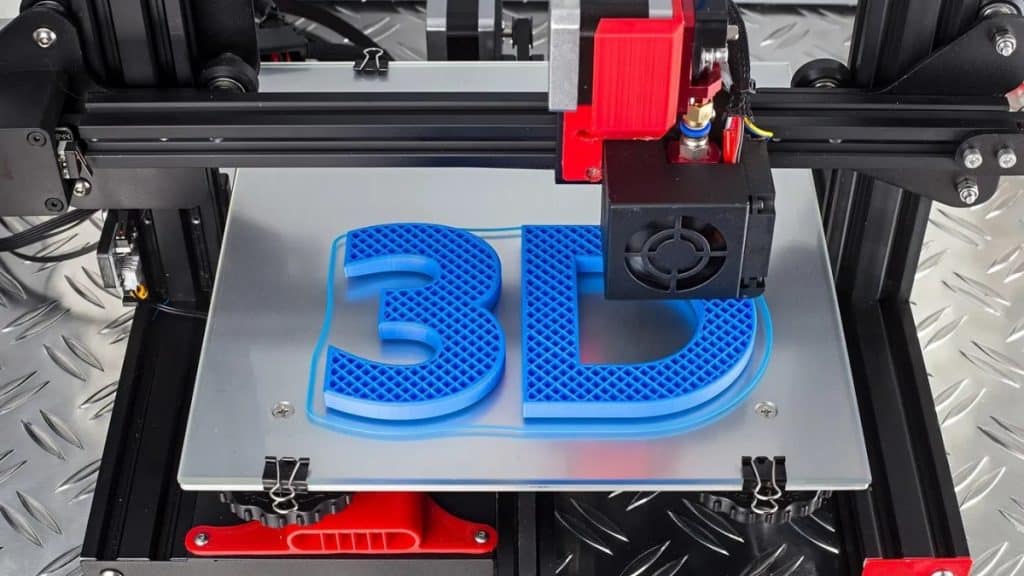As companies across various sectors strive to stay ahead in innovation and production efficiency, 3D printers are becoming critical tools in their arsenal. Let’s explore why many businesses are adopting this technology and highlight its profound impact on industry practices.
The Rise of 3D Printing in Modern Industries
The journey of 3D printing into mainstream business use is a testament to its versatility and efficiency. Originally a niche technology used for prototyping within the design sectors, 3D printing has rapidly expanded its reach. Today, industries ranging from automotive to healthcare are harnessing technology to create parts with complex geometries that are often impossible to produce with traditional manufacturing methods.
The key appeal lies in the significant reduction in lead times and costs associated with 3D printing. Unlike conventional manufacturing, which often requires costly molds and setups, 3D printers can produce objects directly from digital files, slashing the time and expense of bringing a product from the drawing board to the market. This capability accelerates product development cycles and allows companies to experiment with designs without the financial risk associated with traditional manufacturing.
Everything You Need to Know About 3D Printers
To understand the surge in 3D printer acquisitions, it’s essential to grasp what 3D printers are and how they operate. At its core, 3D printing involves creating physical objects by layering materials based on digital models. Unlike subtractive manufacturing methods that remove material to shape an object, 3D printing adds layer by layer to build the desired form. This process can work with various materials, including plastics, metals, and even biocompatible substances used in medical implants.
Businesses are drawn to 3D printing for its direct production capabilities and the customization opportunities it offers. Each print can be tailored to specific needs without tooling changes, making it ideal for custom parts and short production runs. As technology has advanced, the precision and strength of 3D-printed components have improved, leading to their use in more critical applications, such as aerospace components, where durability and weight are paramount.
The Role of Resin 3D Printers in Business Innovation
Among the various types of 3D printing technologies, resin 3D printers have carved a niche that is fascinating and vital for business innovation. Utilizing a process known as stereolithography (SLA), these printers focus a laser on a vat of photopolymer resin, hardening it layer by layer to form highly detailed objects. The precision and the quality of the surfaces produced by resin 3D printers are unmatched, making them ideal for industries where detail is crucial, such as jewelry, dental, and healthcare applications.
Resin 3D printers stand out for their ability to produce objects with incredibly fine features and smooth finishes that far surpass what’s possible with filament-based printing. This level of detail is particularly important for creating intricate molds, prototypes, and parts that are used in the medical and consumer electronics industries. The technology is not limited to small items; recent advancements have seen resin printers scale up, producing larger parts while maintaining high resolution and accuracy.
The enthusiasm around resin 3D printers also stems from their evolving role in production. As businesses aim to create more personalized and intricate products, the demand for resin printing has skyrocketed. Companies find that these printers are not just tools for prototyping but pivotal in the manufacturing process itself, offering a means to produce high-quality and cost-effective end-use products.
3D Printing’s Impact on Product Development and Customization
The ability to quickly adapt and bring new products to market is crucial in the fast-evolving business environment. 3D printing significantly enhances this capability by simplifying the prototyping process. Engineers and designers can iterate designs rapidly, testing and refining prototypes in a fraction of the time it takes with traditional methods. This agility in development speeds up the innovation cycle and allows companies to respond better to market demands and consumer preferences.
However, The real game-changer is the unprecedented customization level that 3D printing offers. The potential for personalization is vast, from tailor-made medical devices that fit individual patients to customized automotive parts that enhance performance. This shift towards customization is transforming industries, driving a move away from mass production towards a more personalized approach, where products are made to meet specific customer needs.
Reducing Costs and Enhancing Supply Chain Efficiency
One of the most compelling reasons businesses invest in 3D printing technology is the potential for cost reduction. Traditional manufacturing processes often involve significant material waste, high labor costs, and associated expenses of maintaining large inventories. 3D printing minimizes waste by using only the material necessary to build a part, and it requires less manual labor, which can significantly decrease production costs.
3D printing is reshaping supply chains by enabling on-demand production. Companies no longer need to stockpile large parts; instead, they can print parts as needed, reducing inventory costs and warehouse needs. This streamlines operation and reduces the carbon footprint associated with shipping and storage. The ability to produce parts locally and on demand also enhances a company’s flexibility in managing supply chain disruptions, which have become increasingly common in global trade.
As companies continue to explore and embrace these technologies, the future looks innovative, highly efficient, and custom-centric, promising a new era of manufacturing and product development.
